居民财产性收入对居民消费的影响研究
VIP免费
摘要
21 世纪以来,居民财产性收入的增长速度明显快于劳动收入等其他收入来源,
财产性收入正在成为我国居民收入的一个重要来源,在居民收入中所占的比例逐
渐提高。财产性收入作为近年来居民收入增长中的亮点,对居民消费的影响如何
呢。对我国居民财产性收入研究的热潮是在 2007 年之后开始的,研究主要集中在
财产性收入的来源、影响因素、分配特点、增长途径等方面,对财产性收入的经
济效应特别是消费效应的研究还比较少。也有一些考察不同来源收入消费效应的
研究,其中财产性收入常常由于总量和比重过低、影响太小被忽略。
本文首先分析了财产性收入的构成、增长趋势以及在城乡、区域间的分布,
验证了我国居民财产性收入具有城乡分布二元结构、区域分布不平衡的特征。与
以往研究相比,还进一步考察了财产性收入在不同收入等级人群中分布严重不均
的现象。在进行实证研究时,借鉴消费函数的思想并单独区分财产性收入,尝试
利用面板数据回归分析财产性收入的平均消费倾向,以考察财产性收入对居民消
费的影响程度。首先,从城乡和不同区域的视角对东部和中西部的城乡居民分别
进行了实证分析;然后,选取财产性收入较高的福建省城镇居民,参照统计年鉴
的分类标准,研究了处于不同收入等级居民的区别。
研究表明,农村居民财产性收入的消费效应相比城镇居民更显著,中西部地
区居民财产性收入的消费效应比东部地区居民显著。对不同收入等级家庭而言,
富裕的家庭财产性收入总量和增长速度都比较高,对家庭的消费具有明显的推动
作用;中间收入层次的家庭财产性收入开始有比较明显的增长,但占比还比较低,
对消费的影响也较小,对这部分家庭的消费中起到决定作用的仍然是其他一些具
有“持久性”特点的收入;在低收入层次的家庭中,财产性收入的总量和所占的
比重微乎其微,他们有限的收入几乎全部用于日常必需的开支,财产性收入的增
长有利于释放他们的消费潜力。但是,由于财产性收入过于集中在平均消费倾向
最低的富裕家庭手中,其对整体居民消费的促进作用是比较小的。在此基础上提
出,应该合理调控居民财产性收入使更广大的群体享有财产性收入,建议从改善
现有分配制度、税收机制和社会保障制度等方面着手。
关键词:财产性收入 居民消费 收入分配不均
ABSTRACT
The property income of Chinese residents has seen a dramatic increase since 21
century, which enjoyed a faster growing than any other labor income or some other
incomes. With an increased proportion in total income, it has become an important part
of the income of residents in China. As one of the most highlighted point of residents
income in recent years, how does the property income effect on the consume behavior
on earth? Study on property income of residents in our country started from 2007,
which focused on the source, influential elements, distribution characteristics,
approaches to growth and so on, which the study on the economic effects, especially on
the consuming effects is quite few. Although a few studies considered effects of
different income sources on consuming, the property income’s effect is often ignored
because its lower sharing.
First of all, this paper analyses the constitution of property income, its trend of
growth and its distribution among regions in order to prove the fact that the property
income featured dual-structure of rural-urban and an unbalanced regional distribution.
Compared with the previous studies, this paper pays much attention to the phenomenon
that the distribution of the property income in different income levels is quite unequal.
During empirical research, this paper refers to consuming function to distinguish
property income, trying to analysis the average propensity to consume of property
income by using panel data in order to study how the property income effect on
household consumption. At first, the study is carried out from the urban and rural areas
and other different regions, then selects the urban residents in Fujian province where
people have more property income as research object, referring to the classification
standards of annual statistical yearbook, studying the property income’s consumption
effect of people who are in different income levels.
Research shows that the urban has a more significant effect than that of rural
regions and the western has a more significant effect than that of eastern regions. For
different families with different incomes, the amount and growth rate is much higher in
rich families with a distinct consuming-propelling effect. Middle-income families show
a obvious increase but the proportion is still relatively low with limited
consumption-effect and permanent income mainly dominated. For the low-income
groups, the sharing of property income is quite little, which is limited to their necessary
daily expense and whose increase is conducive to developing their consuming potential.
However, property income is over-concentrated on rich families with lower average
propensity to consume, which plays a tiny role in promoting residential consumption as
a whole. Therefore, the writer proposes that government should regulate property
income and make wider groups enjoy the property income, which could start from
improving the current distribution system, tax system, social security system and so on。
Key Words: Property Income,Household Consumption,Income
Inequality
目录
中文摘要
ABSTRACT
第一章 绪论 ................................................................................................................. 1
1.1 研究背景及意义 ............................................................................................. 1
1.1.1 研究背景 ............................................................................................... 1
1.1.2 研究意义 ................................................................................................ 2
1.2 文献综述 ......................................................................................................... 3
1.2.1 国内研究现状 ........................................................................................ 3
1.2.2 国外研究现状 ........................................................................................ 8
1.2.3 文献述评 .............................................................................................. 10
1.3 研究思路与方法 ............................................................................................ 11
1.3.1 研究思路 .............................................................................................. 11
1.3.2 研究方法 .............................................................................................. 11
1.4 研究内容与文章结构 .................................................................................... 12
1.4.1 研究内容 .............................................................................................. 12
1.4.2 文章结构 .............................................................................................. 13
1.5 可能的创新与不足 ........................................................................................ 14
第二章 财产性收入和消费的相关理论基础 ........................................................... 15
2.1 财产、财产性收入的内涵 ............................................................................ 15
2.1.1 财产 ...................................................................................................... 15
2.1.2 财产性收入的含义及构成 .................................................................. 15
2.1.3 财产性收入的理论依据 ...................................................................... 16
2.1.4 财产性收入的增长机制 ...................................................................... 17
2.2 消费、居民消费的内涵 ................................................................................ 18
2.2.1 消费和居民消费 .................................................................................. 18
2.2.2 消费和生产的关系 .............................................................................. 18
2.2.3 消费和分配的关系 .............................................................................. 19
2.3 消费函数理论 ................................................................................................ 19
2.3.1 凯恩斯消费函数 .................................................................................. 19
2.3.2 持久收入假说 ...................................................................................... 20
2.3.3 生命周期假说 ...................................................................................... 21
2.4 消费者行为理论 ............................................................................................ 22
2.4.1 消费者的预算约束 .............................................................................. 22
2.4.2 消费者的跨期消费决策 ...................................................................... 23
2.5 社会分层与消费分层理论 ............................................................................ 24
2.5.1 社会分层理论 ...................................................................................... 24
2.5.2 消费分层理论 ...................................................................................... 24
2.5.3 消费分层的影响 .................................................................................. 25
第三章 居民财产性收入与居民消费现状及相互关系分析 ................................... 27
3.1 我国居民财产性收入的概况 ........................................................................ 27
3.1.1 财产性收入的历史背景 ...................................................................... 27
3.1.2 居民家庭财产的迅速积累 .................................................................. 27
3.1.3 财产性收入快速增长 .......................................................................... 28
3.1.4 财产形式收入的结构 .......................................................................... 30
3.1.5 财产性收入分布不均 .......................................................................... 31
3.2 我国当前居民消费的现状 ........................................................................... 34
3.2.1 我国居民消费的历史背景 .................................................................. 34
3.2.2 居民消费的总量快速增长 .................................................................. 35
3.2.3 居民消费的结构 .................................................................................. 35
3.2.4 居民消费分布不均 .............................................................................. 38
3.3 财产性收入和消费的分层现象分析 ............................................................ 41
3.3.1 我国社会分层的现状 .......................................................................... 41
3.3.2 居民财产性收入的分层 ...................................................................... 41
3.3.3 居民消费的分层现象 .......................................................................... 42
3.4 居民财产性收入与居民消费的相互关系 .................................................... 42
3.4.1 财产性收入对居民消费的促进作用 .................................................. 42
3.4.2 财产性收入对居民消费的抑制作用 .................................................. 43
第四章 居民财产性收入对居民消费的影响的实证研究 ....................................... 44
4.1 基础模型设定 ................................................................................................ 44
4.2 基于城乡和区域差别的研究 ........................................................................ 44
4.2.1 东部城镇居民财产性收入对消费影响的实证分析 .......................... 44
4.2.2 中西部城镇居民财产性收入对消费影响的实证分析 ...................... 47
4.2.3 农村居民财产性收入对消费影响的实证结果 .................................. 48
4.2.4 不同区域及城乡居民实证结果汇总 .................................................. 48
4.3 基于不同收入等级的研究——以福建省城镇居民为例 ............................ 48
4.3.1 福建省城镇居民财产性收入概况 ...................................................... 48
4.3.2 福建省城镇居民财产性收入和居民消费的对比 .............................. 49
4.3.3 常规凯恩斯消费函数 .......................................................................... 50
4.3.4 区分收入来源的研究 .......................................................................... 51
4.4 实证结果分析 ................................................................................................ 54
4.4.1 城乡差异分析 ...................................................................................... 54
4.4.2 区域差异分析 ...................................................................................... 54
4.4.3 不同收入等级差异分析 ...................................................................... 54
4.4.4 总体分析 .............................................................................................. 55
第五章 结论与政策建议 ........................................................................................... 57
5.1 结论 ................................................................................................................ 57
5.1.1 财产性收入分布和增长不均衡 .......................................................... 57
5.1.2 财产性收入的消费效应在不同人群中表现各异 .............................. 57
5.1.3 财产性收入快速增长对总体居民消费的促进作用较小 .................. 58
5.2 政策建议 ........................................................................................................ 58
5.2.1 在收入分配领域更加注重公平 .......................................................... 59
5.2.2 创造条件拓宽财产性收入渠道 .......................................................... 59
5.2.3 合理利用税收调控 .............................................................................. 60
5.2.4 完善社会保障制度 .............................................................................. 60
附 录 ........................................................................................................................... 61
参考文献 ..................................................................................................................... 63
在读期间发表的论文和承担科研项目及取得成果 ................................................. 66
致 谢 ........................................................................................................................... 67
相关推荐
-
公务员思想政治教育研究VIP免费
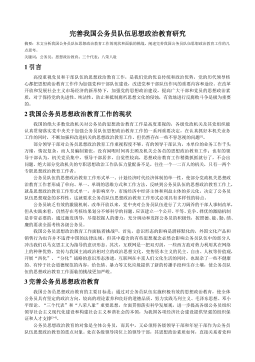
 2024-10-15 30
2024-10-15 30 -
在线社会网络中用户行为的实证分析与机制建模研究VIP免费
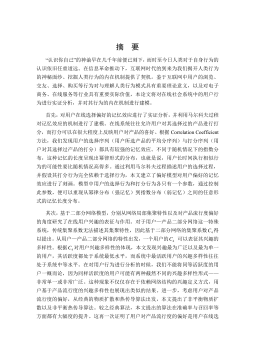
 2025-01-09 6
2025-01-09 6 -
智能优化方法对神经网络的改进及应用研究VIP免费
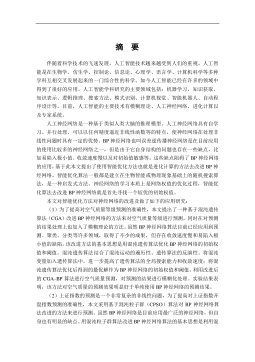
 2025-01-09 6
2025-01-09 6 -
鲜切哈密瓜保鲜技术研究VIP免费

 2025-01-09 8
2025-01-09 8 -
小城镇道路网级配方法及应用研究VIP免费
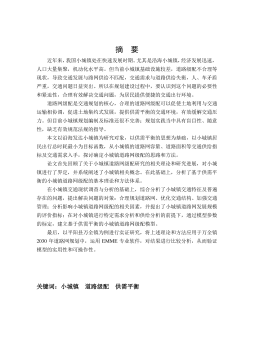
 2025-01-09 6
2025-01-09 6 -
医学信息集成测试系统的研究与实现VIP免费
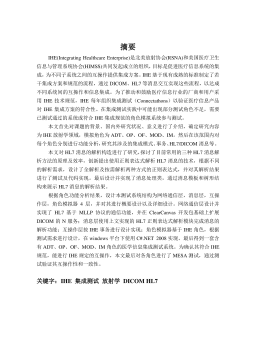
 2025-01-09 7
2025-01-09 7 -
余热驱动氨水吸收式制冷系统的理论及实验研究VIP免费
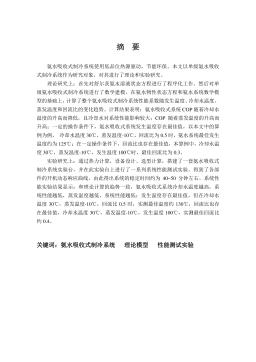
 2025-01-09 7
2025-01-09 7 -
喷雾降温技术适用性及热环境研究VIP免费
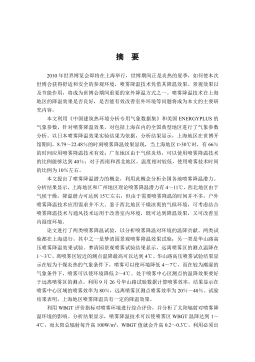
 2025-01-09 9
2025-01-09 9 -
收缩—扩张喷嘴的气泡雾化数值模拟VIP免费
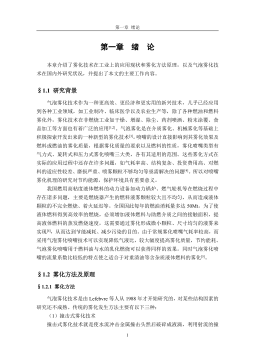
 2025-01-09 8
2025-01-09 8 -
支持供应链的工作流系统结构及其计划与调度的研究与应用VIP免费
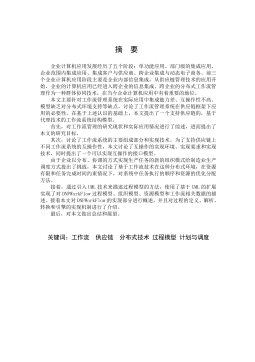
 2025-01-09 11
2025-01-09 11
作者:赵德峰
分类:高等教育资料
价格:15积分
属性:71 页
大小:2.41MB
格式:PDF
时间:2025-01-09
作者详情
相关内容
-

医学信息集成测试系统的研究与实现
分类:高等教育资料
时间:2025-01-09
标签:无
格式:PDF
价格:15 积分
-

余热驱动氨水吸收式制冷系统的理论及实验研究
分类:高等教育资料
时间:2025-01-09
标签:无
格式:PDF
价格:15 积分
-

喷雾降温技术适用性及热环境研究
分类:高等教育资料
时间:2025-01-09
标签:无
格式:PDF
价格:15 积分
-

收缩—扩张喷嘴的气泡雾化数值模拟
分类:高等教育资料
时间:2025-01-09
标签:无
格式:PDF
价格:15 积分
-

支持供应链的工作流系统结构及其计划与调度的研究与应用
分类:高等教育资料
时间:2025-01-09
标签:无
格式:PDF
价格:15 积分






